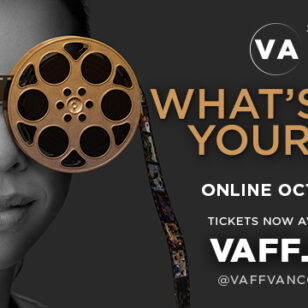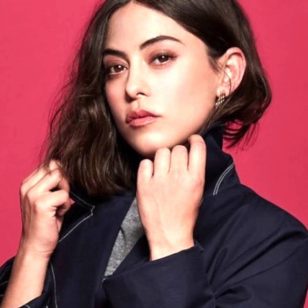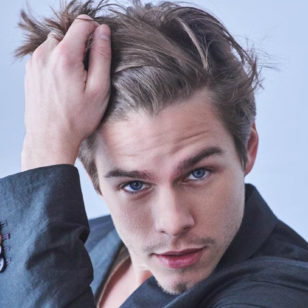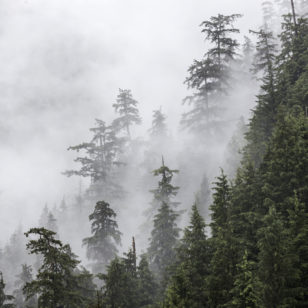
Barbara Kruger, Untitled (SmashUp), 2016 site-specific installation at the Vancouver Art Gallery. Photo: Rachel Topham, Vancouver Art Gallery
When an exhibition includes everything from masterpieces by Pablo Picasso to masterpieces by Quentin Tarantino, it’s got to be big.
The Vancouver Art Gallery has officially opened its biggest exhibition ever, MashUp: The Birth of Modern Culture. Featuring nearly 400 works of art by 156 different artists and filling all four floors of the gallery, the exhibition is a whirlwind tour of some of the most innovative, envelope-pushing “mashup” art from the early 1900s to today.
Just what is a mashup? In this case, it’s used to describe works of art that somehow incorporate found materials from everyday life or even other works of art. Some of the earliest examples can be traced to the early 20th century. Pablo Picasso and Georges Braque pioneered a new technique of integrating pieces of wallpaper, newspapers and other materials right into their paintings and sculptures.
This approach, known variously as mashup, collage, montage and bricolage, has since become a pillar of the art and culture scene and remains en vogue today. The sampling of classic beats in hip hop and R&B music, for example, is a prime contemporary example of the mashup concept.
The Vancouver Art Gallery’s exhibition offers a chronological history of the mashup phenomenon, starting with Picasso on the fourth floor of the gallery and working down to 21st-century examples (including works by local icon Stan Douglas) on the first floor.
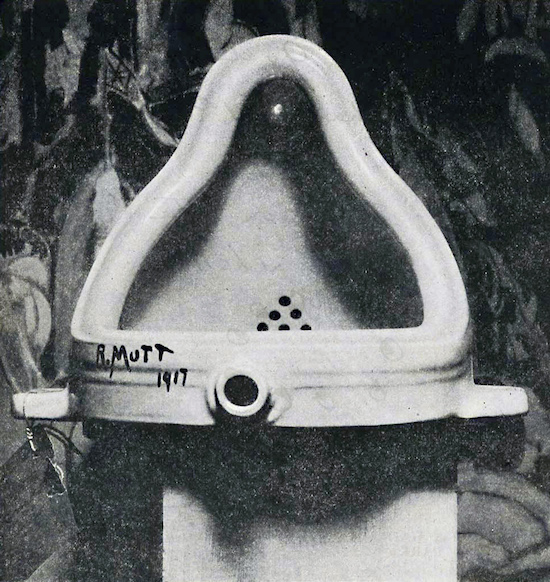
Marcel Duchamp’s original Fountain, photographed by Alfred Stieglitz at the 291 (Art Gallery) after the 1917 Society of Independent Artists exhibit
Fittingly, the exhibition incorporates pieces from museums around the world and was assembled by a total of 30 curators. Among the most famous (or infamous) objects on display is Marcel Duchamp’s iconic Fountain. The 1917 piece consists of a ceramic urinal with a signature on it. It represents both a critique of the traditional art establishment and an entirely new genre of “found art”: everyday materials transformed into something more by the simple act of calling them art.
Also hard to miss in the exhibition is a giant mural of black and white text and emojis that fills the rotunda between the first and second floors. Called Untitled (SmashUp), the piece by New York-based artist Barbara Krueger is comprised of snippets of found text and offers a super-sized critique of the way we embrace and exploit the cultures around us.
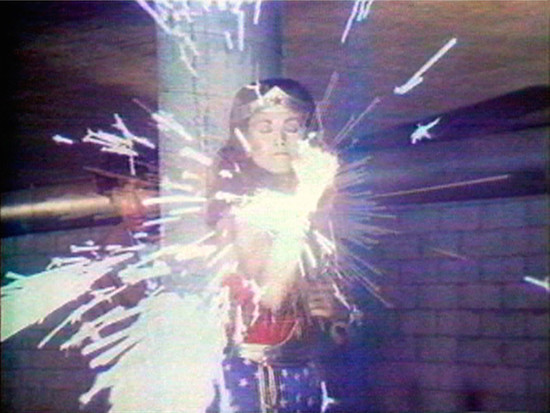
Dara Birnbaum, Technology Transformation/Wonder Woman (video still), 1978–79, single-channel video, Courtesy Electronic Arts Intermix (EAI), New York
Towards the lower floors of the gallery, music and digital technologies play an increasingly central role in the exhibition. An exhibit on voguing – the ’80s art of combining fashion poses with bits of different dance styles – features floor-to-ceiling images of voguers accompanied by vintage music from the scene. Other pieces explore the phenomena of sampling and splicing and even the way that hacking and remixing represent the newest form of mashup.
All in all, the exhibition lives up to its billing as the gallery’s most ambitious show ever, with works from a who’s who of modern and post-modern artists: Andy Warhol, Jean-Michel Basquiat, Joseph Cornell, T.S. Eliot, Jean-Luc Godard, Brian Eno and more. MashUp: The Birth of Modern Culture runs now through June 12 at the Vancouver Art Gallery.











